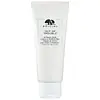What's inside
What's inside
 Key Ingredients
Key Ingredients

No key ingredients
 Benefits
Benefits

 Concerns
Concerns

 Ingredients Side-by-side
Ingredients Side-by-side

Water
Skin ConditioningPropanediol
SolventKaolin
AbrasiveColloidal Sulfur
AntimicrobialGlycerin
HumectantStearic Acid
CleansingStearyl Alcohol
EmollientHectorite
AbsorbentC10-18 Triglycerides
EmollientRicinus Communis Seed Oil
MaskingAzelaic Acid
BufferingCetyl Alcohol
EmollientZinc PCA
HumectantPunica Granatum Seed Oil
EmollientHelianthus Annuus Seed Oil
EmollientPentylene Glycol
Skin ConditioningSodium Stearoyl Glutamate
CleansingAloe Barbadensis Leaf Juice
Skin ConditioningAllantoin
Skin ConditioningDaucus Carota Sativa Seed Oil
EmollientCaprylyl Glycol
EmollientAlthaea Officinalis Root Extract
Skin ConditioningBisabolol
MaskingOlea Europaea Fruit Oil
MaskingSodium Phytate
Ethylhexylglycerin
Skin ConditioningCalendula Officinalis Flower
Skin ConditioningPanthenol
Skin ConditioningTriethoxycaprylylsilane
Salix Alba Bark Extract
AstringentCharcoal Powder
AbrasiveZingiber Officinale Root Extract
MaskingCitric Acid
BufferingSodium Chloride
MaskingHypochlorous Acid
AntiseborrhoeicCI 77288
Cosmetic ColorantWater, Propanediol, Kaolin, Colloidal Sulfur, Glycerin, Stearic Acid, Stearyl Alcohol, Hectorite, C10-18 Triglycerides, Ricinus Communis Seed Oil, Azelaic Acid, Cetyl Alcohol, Zinc PCA, Punica Granatum Seed Oil, Helianthus Annuus Seed Oil, Pentylene Glycol, Sodium Stearoyl Glutamate, Aloe Barbadensis Leaf Juice, Allantoin, Daucus Carota Sativa Seed Oil, Caprylyl Glycol, Althaea Officinalis Root Extract, Bisabolol, Olea Europaea Fruit Oil, Sodium Phytate, Ethylhexylglycerin, Calendula Officinalis Flower, Panthenol, Triethoxycaprylylsilane, Salix Alba Bark Extract, Charcoal Powder, Zingiber Officinale Root Extract, Citric Acid, Sodium Chloride, Hypochlorous Acid, CI 77288
Water
Skin ConditioningCetyl Esters
EmollientZinc Oxide
Cosmetic ColorantTitanium Dioxide
Cosmetic ColorantCetyl Alcohol
EmollientCetearyl Alcohol
EmollientGlycerin
HumectantGlyceryl Stearate
EmollientPEG-100 Stearate
Camphor
MaskingCeteareth-20
CleansingSalicylic Acid
MaskingColloidal Sulfur
AntimicrobialButylene Glycol
HumectantBentonite
AbsorbentCaprylyl Glycol
EmollientHexylene Glycol
EmulsifyingPhenoxyethanol
PreservativeIngredients Explained
These ingredients are found in both products.
Ingredients higher up in an ingredient list are typically present in a larger amount.
Caprylyl Glycol is a humectant and emollient, meaning it attracts and preserves moisture.
It is a common ingredient in many products, especially those designed to hydrate skin. The primary benefits are retaining moisture, skin softening, and promoting a healthy skin barrier.
Though Caprylyl Glycol is an alcohol derived from fatty acids, it is not the kind that can dry out skin.
This ingredient is also used as a preservative to extend the life of products. It has slight antimicrobial properties.
Learn more about Caprylyl GlycolCetyl Alcohol is a fatty alcohol. Fatty Alcohols are most often used as an emollient or to thicken a product.
Its main roles are:
Though it has "alcohol" in the name, it is not related to denatured alcohol or ethyl alcohol.
The FDA allows products labeled "alcohol-free" to have fatty alcohols.
Learn more about Cetyl AlcoholColloidal Sulfur can be bad for acne prone skin.
Glycerin is already naturally found in your skin. It helps moisturize and protect your skin.
A study from 2016 found glycerin to be more effective as a humectant than AHAs and hyaluronic acid.
As a humectant, it helps the skin stay hydrated by pulling moisture to your skin. The low molecular weight of glycerin allows it to pull moisture into the deeper layers of your skin.
Hydrated skin improves your skin barrier; Your skin barrier helps protect against irritants and bacteria.
Glycerin has also been found to have antimicrobial and antiviral properties. Due to these properties, glycerin is often used in wound and burn treatments.
In cosmetics, glycerin is usually derived from plants such as soybean or palm. However, it can also be sourced from animals, such as tallow or animal fat.
This ingredient is organic, colorless, odorless, and non-toxic.
Glycerin is the name for this ingredient in American English. British English uses Glycerol/Glycerine.
Learn more about GlycerinWater. It's the most common cosmetic ingredient of all. You'll usually see it at the top of ingredient lists, meaning that it makes up the largest part of the product.
So why is it so popular? Water most often acts as a solvent - this means that it helps dissolve other ingredients into the formulation.
You'll also recognize water as that liquid we all need to stay alive. If you see this, drink a glass of water. Stay hydrated!
Learn more about Water